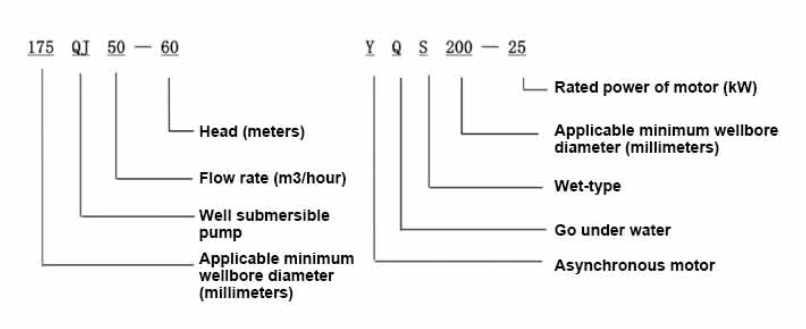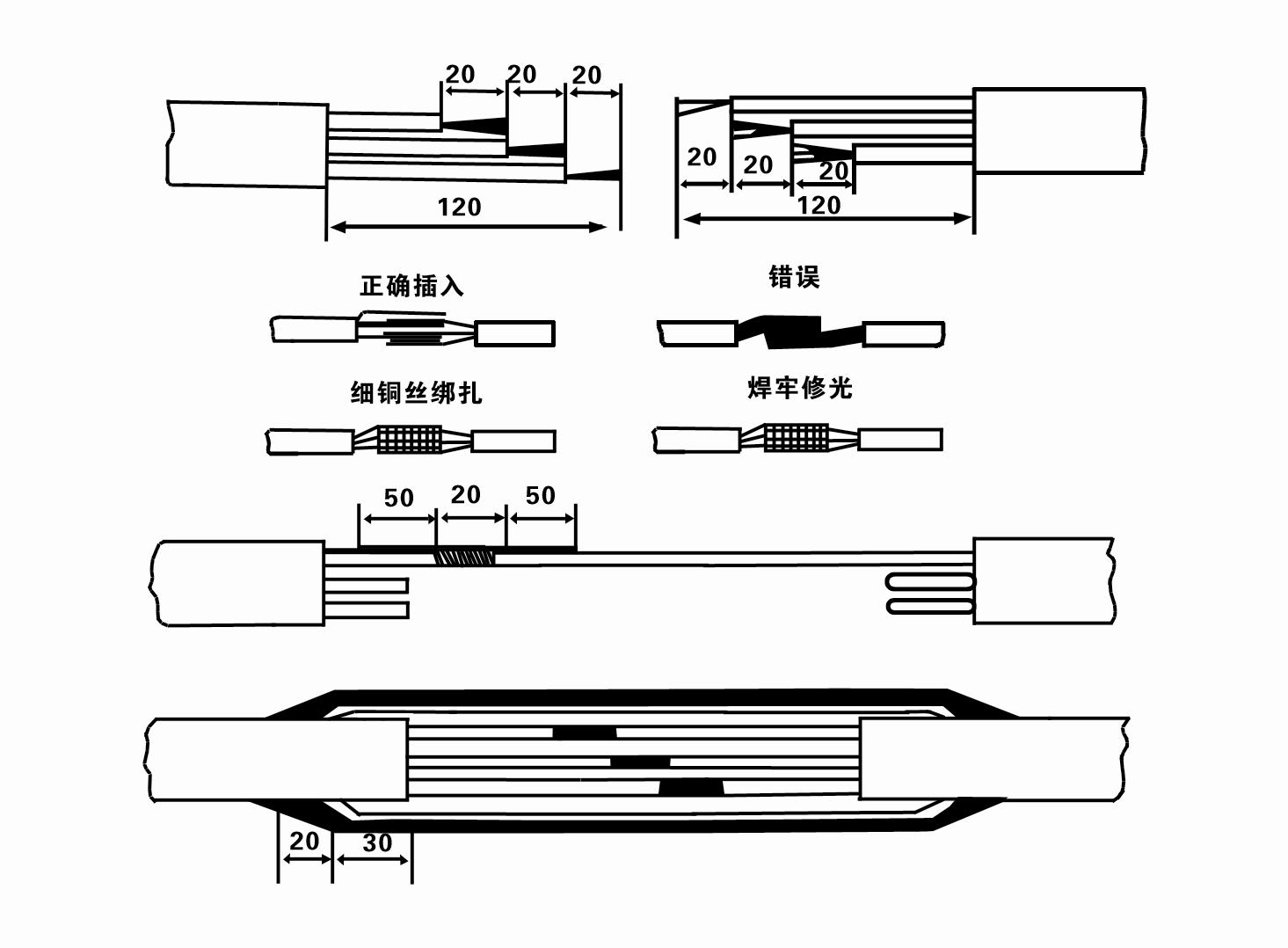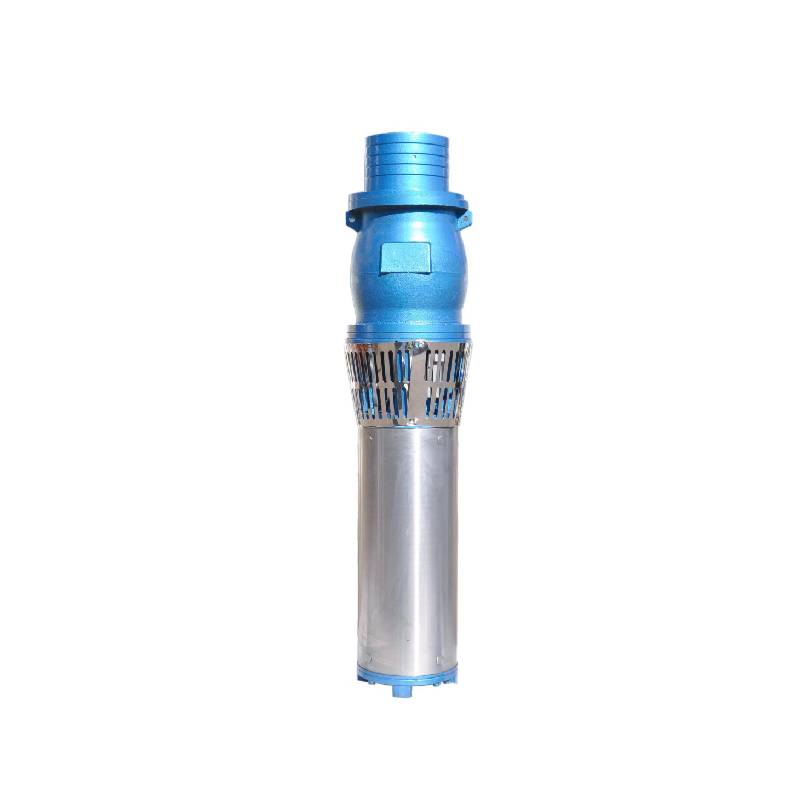Well-designed sand-proof large flow water system, using water-immersed motor, no oil after burning machine does not pollute water. Suitable for freshwater aquaculture extraction of river water, sea water oxygen. Flow range 100-1000m3/h, lift 3-100m, power 3-100KW.
1, ການສະຫນອງພະລັງງານ: ສາມເຟດ AC 380V (ຄວາມທົນທານ + / - 5%), 50HZ (ຄວາມທົນທານ + / - 1%).
2, ຄຸນນະພາບນ້ໍາ:
(1) water temperature is not higher than 20 °C;
(2) ເນື້ອໃນ impurities ແຂງ (ອັດຕາສ່ວນມະຫາຊົນ) ບໍ່ຫຼາຍກ່ວາ 0.01%;
(3) ຄ່າ PH (pH) 6.5-8.5;
(4) ເນື້ອໃນຂອງ hydrogen sulfide ແມ່ນບໍ່ຫຼາຍກ່ວາ 1.5mg/L;
(5) ປະລິມານ chloride ion ບໍ່ເກີນ 400mg/L.
3, ມໍເຕີຖືກປິດຫຼືໂຄງສ້າງປຽກນ້ໍາ, ກ່ອນທີ່ຈະນໍາໃຊ້ຢູ່ຕາມໂກນມໍເຕີ submersible ຕ້ອງເຕັມໄປດ້ວຍນ້ໍາສະອາດ, ປ້ອງກັນບໍ່ໃຫ້ເຕັມທີ່ຜິດ, ແລະຫຼັງຈາກນັ້ນ tighten ນ້ໍາສີດ, bolts ປ່ອຍອາກາດ, ຖ້າບໍ່ດັ່ງນັ້ນບໍ່ອະນຸຍາດໃຫ້ນໍາໃຊ້.
4, ປັ໊ມ submersible ຕ້ອງໄດ້ຮັບການ submerged ຫມົດໃນນ້ໍາ, ຄວາມເລິກຂອງການດໍານ້ໍາບໍ່ຫຼາຍກ່ວາ 70m, ລຸ່ມຂອງ pump submersible ຈາກລຸ່ມຂອງດີແມ່ນບໍ່ຫນ້ອຍກ່ວາ 3m.
5, ການໄຫຼຂອງນ້ໍາດີຄວນຈະສາມາດຕອບສະຫນອງຜົນຜະລິດນ້ໍາ pump submersible ແລະການດໍາເນີນງານຢ່າງຕໍ່ເນື່ອງ, ຜົນຜະລິດນ້ໍາ pump submersible ຄວນໄດ້ຮັບການຄວບຄຸມຢູ່ທີ່ 0.7 - 1.2 ເທົ່າຂອງການໄຫຼຈັດອັນດັບ.
6, ນ້ໍາດີຄວນຈະເປັນຊື່, ປັ໊ມ submersible ບໍ່ສາມາດຖືກນໍາໃຊ້ຫຼື dumped, ພຽງແຕ່ການນໍາໃຊ້ແນວຕັ້ງ.
7, ປັ໊ມ submersible ຕ້ອງໄດ້ຮັບການຈັບຄູ່ກັບສາຍໄຟຕາມຄວາມຕ້ອງການ, ແລະອຸປະກອນປ້ອງກັນ overload ພາຍນອກ. 8, ປັ໊ມຖືກຫ້າມຢ່າງເຂັ້ມງວດໂດຍບໍ່ມີເຄື່ອງທົດສອບນ້ໍາທີ່ບໍ່ມີການໂຫຼດ

| ຕາຕະລາງການປະຕິບັດການປັ໊ມ submersible 200 QS ຊຸດທີ່ປັບແຕ່ງເອງບໍ່ໄດ້ມາດຕະຖານ |
||||||||
| ຕົວແບບ | ຕົວແບບ | |||||||
| QS5-70-2.2KW | QS10-52-4KW | |||||||
| QS5-90-3KW | QS10-70-5.5KW | |||||||
| QS5-108-4KW | QS10-90-7.5KW | |||||||
| QS5-126-5.5KW | QS10-108-7.5KW | |||||||
| QS5-144-5.5KW | QS20-40-4KW | |||||||
| QS5-160-7.5KW | QS20-54-5.5KW | |||||||
| QS5-180-7.5KW | QS20-65-7.5KW | |||||||
| QS10-36-2.2KW | QS20-81-7.5KW | |||||||
| QS10-54-3KW | QS32-13-2.2KW | |||||||
| QS10-70-4KW | QS32-26-4KW | |||||||
| QS10-90-5.5KW | QS32-52-7.5KW | |||||||
| QS10-108-5.5KW | QS40-39-7.5KW | |||||||
| QS10-126-7.5KW | QS40-13-4KW | |||||||
| QS10-140-7.5KW | QS40-26-5.5KW | |||||||
| QS15-38-3KW | QS50-13-4KW | |||||||
| QS15-54-4KW | QS50-26-5.5KW | |||||||
| QS15-65-5.5KW | QS50-39-7.5KW | |||||||
| QS15-81-5.5KW | QS63-12-4KW | |||||||
| QS15-100-7.5KW | QS63-24-7.5KW | |||||||
| QS20-30-3KW | QS80-11-4KW | |||||||
| QS20-45-4KW | QS80-22-7.5KW | |||||||
| QS20-60-5.5KW | QS10-88-7.5KW | |||||||
| QS20-75-7.5KW | QS10-105-7.5KW | |||||||
| QS20-81-7.5KW | QS40-52-11KW | |||||||
| QS10-198-15KW | QS50-60-11KW | |||||||
| QS10-160-9.2KW | QS65-30-9.2KW | |||||||
| QS15-180-15KW | QS80-28-9.2KW | |||||||
| QS10-180-11KW | QS125-15-7.5KW | |||||||
This well submersible pump is a clean water pump. It is strictly prohibited to excavate new wells, discharge sediments and muddy water. The voltage rating of the pump is 380/50 hertz, and other voltage ratings are not allowed. The submersible motor needs to be customized, and the underground cable must be waterproof cable, and must be equipped with starting equipment, such as distribution box, etc. The starting equipment should have common motor comprehensive protection functions, such as short circuit overload protection, phase loss protection, undervoltage protection, grounding protection and idling protection, etc. In order to prevent abnormal conditions, the protection device should be timely trip. During the installation and use process, the pump must be reliably grounded. It is strictly prohibited to push and pull the switch when hands and feet are wet. The power supply must be cut off before installation and maintenance of the pump. An obvious "anti-electric shock" sign must be set up where the pump is used. Before going down the well or installing, the motor must fill the inner cavity with distilled water or non-corrosive clean cold water, and the inlet and outlet bolts must be tightened. When testing the pump, the pump cavity must be filled with water to lubricate the rubber bearings, and the instant start time shall not exceed one second to check whether the direction is correct. Pay attention to safety when lifting, and prevent the overturning of the pump from causing injury. Strictly according to the provisions of the pump lift and flow range, to prevent the pump in low lift when the large flow or in high lift when the large pull, resulting in serious wear and tear of thrust bearings and other parts, causing motor overload and burnout. After the pump into the well, the insulation resistance between the motor and the ground should not be less than 100MΩ, after the start of regular observation of voltage and current, and check whether the motor winding insulation meets the requirements; if the pump storage temperature below freezing, the water in the motor cavity should be discharged to prevent the cold temperature caused by the motor cavity water icing and damage the motor due to low temperature.
ການແນະນໍາໂດຍຫຍໍ້ຂອງໂຄງສ້າງ: ສ່ວນປັ໊ມສ່ວນຫຼາຍແມ່ນປະກອບດ້ວຍປ່ຽງປັ໊ມ, ຝາອັດປາກມົດລູກ, ເປືອກຫຸ້ມນອກ, ເບກຢາງ, ຮ່າງກາຍຂອງປ່ຽງ (ສ່ວນທາງເລືອກ) ແລະສ່ວນປະກອບອື່ນໆ. ສ່ວນມໍເຕີສ່ວນໃຫຍ່ແມ່ນປະກອບດ້ວຍພື້ນຖານ, ຮູບເງົາຄວບຄຸມຄວາມກົດດັນ, ຮັບຜິດຊອບ thrust, ແຜ່ນ thrust, ບ່ອນນັ່ງ bearing ຄູ່ມືຕ່ໍາ, stator, rotor, ບ່ອນນັ່ງ bearing ຄູ່ມືເທິງ, ວົງຊາຍ, ພາກ inlet ນ້ໍາ, ສາຍເຄເບີນແລະອົງປະກອບອື່ນໆ.
ຄຸນນະສົມບັດຕົ້ນຕໍຂອງຜະລິດຕະພັນປະກອບມີ:
1, ມໍເຕີເປັນມໍເຕີ asynchronous ສາມເຟດທີ່ເຕັມໄປດ້ວຍນ້ໍາປຽກຊຸ່ມ, ມໍເຕີແມ່ນເຕັມໄປດ້ວຍນ້ໍາສະອາດ, ໃຊ້ເພື່ອເຮັດໃຫ້ມໍເຕີເຢັນແລະ lubricate bearing, ຮູບເງົາຄວບຄຸມຄວາມກົດດັນຢູ່ດ້ານລຸ່ມຂອງມໍເຕີຖືກນໍາໃຊ້ເພື່ອປັບ. ຄວາມແຕກຕ່າງຂອງຄວາມກົດດັນຂະຫຍາຍຕົວແລະການຫົດຕົວຂອງນ້ໍາພາຍໃນຮ່າງກາຍທີ່ເກີດຈາກການປ່ຽນແປງຂອງການເພີ່ມຂຶ້ນຂອງອຸນຫະພູມຂອງ motor ໄດ້.
2, ເພື່ອປ້ອງກັນບໍ່ໃຫ້ດິນຊາຍໃນນ້ໍາດີເຂົ້າໄປໃນມໍເຕີ, ປາຍເທິງຂອງ shaft ມໍເຕີໄດ້ຖືກຕິດຕັ້ງດ້ວຍສອງປະທັບຕານ້ໍາມັນ, ແລະແຫວນຊາຍໄດ້ຖືກຕິດຕັ້ງເພື່ອສ້າງໂຄງສ້າງປ້ອງກັນດິນຊາຍ.
3, ເພື່ອປ້ອງກັນບໍ່ໃຫ້ shaft ປັ໊ມແລ່ນຂຶ້ນໃນເວລາທີ່ເລີ່ມຕົ້ນ, shaft ປັ໊ມແລະ shaft motor ແມ່ນເຊື່ອມຕໍ່ໂດຍ coupling, ແລະລູກປືນ thrust ເທິງໄດ້ຖືກຕິດຕັ້ງຢູ່ໃນສ່ວນຕ່ໍາຂອງມໍເຕີ.
4, ການ lubrication ຂອງ motor ແລະ pump bearing ແມ່ນການ lubrication ນ້ໍາ.
5, motor stator winding ແມ່ນເຮັດດ້ວຍ submersible motor winding wire ຄຸນນະພາບສູງ, ປະສິດທິພາບ insulation ສູງ.
6, ປັ໊ມຖືກອອກແບບໂດຍຄອມພິວເຕີ CAD, ມີໂຄງສ້າງທີ່ງ່າຍດາຍແລະການປະຕິບັດດ້ານວິຊາການທີ່ດີ.

(1) ການກະກຽມກ່ອນການຕິດຕັ້ງ:
1. ກວດເບິ່ງວ່າປັ໊ມ submersible ຕອບສະຫນອງເງື່ອນໄຂການນໍາໃຊ້ແລະຂອບເຂດທີ່ລະບຸໄວ້ໃນຄູ່ມື.
2. ການນໍາໃຊ້ obiect ຫນັກທີ່ມີເສັ້ນຜ່າກາງເທົ່າກັບເສັ້ນຜ່າກາງນອກສູງສຸດຂອງປັ໊ມ submersible, ວັດແທກວ່າ inneldiameter ຂອງ wellbore ສາມາດເຫມາະກັບ pump submersible ໄດ້, ແລະວັດແທກວ່າຄວາມເລິກຂອງດີຕອບສະຫນອງຄວາມຕ້ອງການການຕິດຕັ້ງ.
3. ກວດເບິ່ງວ່າອ່າງນ້ຳນັ້ນສະອາດບໍ່ ແລະ ນ້ຳຂອງນ້ຳກໍ່ມີຄວາມຂຸ່ນຫຼືບໍ່. ຢ່າໃຊ້ປັ໊ມໄຟຟ້າ submersible ເພື່ອລ້າງຂີ້ຕົມແລະນ້ໍາຊາຍຂອງ welor pump ເພື່ອຫຼີກເວັ້ນຄວາມເສຍຫາຍກ່ອນໄວອັນຄວນຂອງປັ໊ມໄຟຟ້າ submersible.
4. ກວດເບິ່ງວ່າຕໍາແໜ່ງຂອງຕົວຍຶດຕິດສະຫວັດແມ່ນເຫມາະສົມຫຼືບໍ່ ແລະ ມັນສາມາດທົນກັບຄຸນນະພາບຂອງເຄື່ອງທັງໝົດໄດ້ຫຼືບໍ່.
5. ກວດເບິ່ງວ່າອົງປະກອບຂອງປັ໊ມ submersible ຄົບຖ້ວນສົມບູນແລະຕິດຕັ້ງຢ່າງຖືກຕ້ອງຕາມແຜນຜັງການປະກອບໃນຄູ່ມື, ເອົາຫນ້າຈໍການກັ່ນຕອງອອກແລະຫມຸນທໍ່ເຊື່ອມຕໍ່ເພື່ອເບິ່ງວ່າມັນ rotates ຍືດຫຍຸ່ນ.
6. ຖອດສະກູນ້ຳອອກ ແລະ ຕື່ມນ້ຳທີ່ສະອາດ, ບໍ່ມີສານກັດກ່ອນ (ໝາຍເຫດ, ໝຸນມັນອອກ), ຈາກນັ້ນບີບອັດສະກູໃຫ້ແໜ້ນ. ຫຼັງຈາກ 12 ຊົ່ວໂມງຂອງການສີດນ້ໍາ, ຄວາມຕ້ານທານ insulation ຂອງມໍເຕີບໍ່ຄວນຫນ້ອຍກ່ວາ 150M Q ເມື່ອວັດແທກກັບຕາຕະລາງສັ່ນ 500V.
7. Cable joint, cut off a 120mm rubber sleeve from one end of the outgoing cable and the matching cable with an electrician's knifethen stagger the length of the three core wires in a stepped shape, peel off a 20mm copper core, scrape of the oxide layer on theoutside of the copper wire with a knife or sand cloth, and insert the two connected wire ends in palirs.After tying the layer tightly with fine copper wire, solder it thoroughly and firmly, and sand of any. burrs on the surface. Then, forthe three joints, use polyvester insulation tape to wrap them in a semi stacked manner for three lavers. Wrap the two ends of thewrapping layer tightywith nyion thread,and then use a semi stacked method to wrap the tape for three layers. Wrap the outellayer with high-pressure insulation tape for three layers. Finally, fold the threestrands together and repeatedly wrap them for fivelayers with high-pressure tape. Each layer must be tightly tied, and the interlayer joints must be tight and fimm to prevent water frompenetrating and damaging the insulation, After wrapping, soak in water at room temperature of 20 ’c for 12 hours, and measurethe insulation resistance with a shaking table, which should not be less than 100M Ω
ແຜນວາດຂະບວນການສາຍສາຍໄຟທີ່ຕິດຄັດມາມີດັ່ງນີ້:

8. ໃຊ້ມັນຕິມິເຕີເພື່ອກວດເບິ່ງວ່າສາຍໄຟສາມເຟດຖືກເຊື່ອມຕໍ່ຫຼືບໍ່ແລະວ່າຄວາມຕ້ານທານ DC ແມ່ນປະມານສົມດູນຫຼືບໍ່.
9. ກວດເບິ່ງວ່າວົງຈອນແລະຄວາມອາດສາມາດຂອງຫມໍ້ແປງແມ່ນ overloaded, ແລະຫຼັງຈາກນັ້ນເຊື່ອມຕໍ່ສະຫຼັບປ້ອງກັນ overload ຫຼືອຸປະກອນເລີ່ມຕົ້ນ. ເບິ່ງຕາຕະລາງ 2 ສໍາລັບແບບຈໍາລອງສະເພາະ, ແລະຫຼັງຈາກນັ້ນເອົາຖັງນ້ໍາເຂົ້າໄປໃນປັ໊ມນ້ໍາຈາກປ່ຽງປ່ຽງນ້ໍາເພື່ອຫລໍ່ລື່ນລູກປືນຢາງໃນປັ໊ມ, ແລະຫຼັງຈາກນັ້ນວາງປັ໊ມໄຟຟ້າ submersible ຕັ້ງຊື່ແລະສະຫມໍ່າສະເຫມີ. ເລີ່ມຕົ້ນ (ບໍ່ເກີນຫນຶ່ງວິນາທີ). ແລະກວດເບິ່ງວ່າທິດທາງການຊີ້ນໍາແມ່ນສອດຄ່ອງກັບເຄື່ອງຫມາຍການຊີ້ນໍາຫຼືບໍ່. ຖ້າບໍ່ແມ່ນ, ແລກປ່ຽນສອງຕົວເຊື່ອມຕໍ່ຂອງສາຍໄຟສາມເຟດ. ຫຼັງຈາກນັ້ນ, ຕິດຕັ້ງຕົວກອງແລະກະກຽມທີ່ຈະລົງໄປໃນນ້ໍາດີ. ຖ້າໃຊ້ໃນໂອກາດພິເສດ (ເຊັ່ນ: ຮ່ອງ, ຄອງ, ແມ່ນໍ້າ, ໜອງ, ໜອງ, ແລະອື່ນໆ), ປັ໊ມໄຟຟ້າຕ້ອງມີພື້ນຖານທີ່ເຊື່ອຖືໄດ້.
(2) ອຸປະກອນການຕິດຕັ້ງແລະເຄື່ອງມື:
1. ຄູ່ຂອງຕ່ອງໂສ້ຍົກສໍາລັບຫຼາຍກ່ວາສອງໂຕນ.
2. Tripod ທີ່ມີຄວາມສູງຕັ້ງບໍ່ຫນ້ອຍກວ່າສີ່ແມັດ.
3. ເຊືອກຫ້ອຍສອງອັນ (ສາຍເຊືອກ) ທີ່ສາມາດຮັບນ້ຳໜັກໄດ້ຫຼາຍກວ່າໜຶ່ງໂຕນ (ສາມາດຮັບນ້ຳໜັກໄດ້ຂອງປ້ຳນ້ຳຄົບຊຸດ).
4. ຕິດຕັ້ງສອງຄູ່ຂອງ clamps (splint).
5. wrenches, hammers, screwdrivers, ເຄື່ອງມືໄຟຟ້າແລະເຄື່ອງມື, ແລະອື່ນໆ.
(3) ການຕິດຕັ້ງປໍ້າໄຟຟ້າ:
1. ແຜນວາດການຕິດຕັ້ງຂອງປັ໊ມໄຟຟ້າ submersible ແມ່ນສະແດງຢູ່ໃນຮູບ 2. ຂະຫນາດການຕິດຕັ້ງສະເພາະແມ່ນສະແດງຢູ່ໃນຕາຕະລາງ 3 "ລາຍການຂະຫນາດການຕິດຕັ້ງຂອງປັ໊ມໄຟຟ້າ Submersible".
2. ປັ໊ມໄຟຟ້າໃຕ້ນໍ້າທີ່ມີຫົວບໍ່ເກີນ 30 ແມັດ ສາມາດຍົກນໍ້າໃສ່ນໍ້າສ້າງໄດ້ໂດຍກົງ ໂດຍໃຊ້ສາຍທໍ່ ແລະສາຍເຊືອກ ຫຼືເຊືອກເຊືອກອື່ນໆ ທີ່ສາມາດຮັບນໍ້າໜັກໄດ້ທັງໝົດຂອງເຄື່ອງຈັກ, ທໍ່ນໍ້າ ແລະນໍ້າໃນທໍ່.
3. ປໍ້າທີ່ມີຫົວຫຼາຍກວ່າ 30 ແມັດ ໃຊ້ທໍ່ເຫຼັກ, ແລະ ລຳດັບການຕິດຕັ້ງມີດັ່ງນີ້:
①ໃຊ້ຕົວຍຶດເພື່ອມັດສ່ວນເທິງຂອງປ້ຳນ້ຳ (ມໍເຕີແລະປ້ຳນ້ຳໄດ້ເຊື່ອມຕໍ່ກັນແລ້ວໃນເວລານີ້), ຍົກມັນດ້ວຍຕ່ອງໂສ້ຫ້ອຍ, ແລະຄ່ອຍໆມັດມັນເຂົ້າໄປໃນນ້ຳສ້າງຈົນກວ່າເອົາຕົວຍຶດໃສ່ຫົວນ້ຳສ້າງ ແລະເອົາສາຍຮັດອອກ. ຕ່ອງໂສ້ຫ້ອຍ.
② ໃຊ້ຕົວຍຶດອີກຄູ່ເພື່ອຍຶດທໍ່, ຍົກມັນດ້ວຍຕ່ອງໂສ້ຫ້ອຍ 15 ຊຕມຈາກຫນ້າແປນ, ແລະຫຼຸດລົງຊ້າໆ. ລະຫວ່າງປ່ຽງທໍ່ ແລະປ່ຽງປ່ຽງ ວາງແຜ່ນຢາງໃສ່ບ່ອນ ແລະຮັດທໍ່ ແລະປ້ຳໃຫ້ສະເໝີກັນດ້ວຍບານປະຕູ, ແກ່ນໝາກໄມ້ ແລະເຄື່ອງຊັກພາກຮຽນ spring.
③ ຍົກປັ໊ມ submersible ເລັກນ້ອຍ, ເອົາ clamp ຢູ່ເທິງສຸດຂອງປັ໊ມນ້ໍາ, ມັດສາຍກັບທໍ່ນ້ໍາຢ່າງແຫນ້ນຫນາດ້ວຍ tape ພາດສະຕິກ, ແລະຄ່ອຍໆມັດມັນລົງຈົນກ່ວາ clamp ໄດ້ຖືກວາງໄວ້ທີ່ຫົວ wellhead.
④ ໃຊ້ວິທີດຽວກັນເພື່ອມັດທໍ່ນ້ຳທັງໝົດໃສ່ໃນນ້ຳສ້າງ.
⑤ຫຼັງຈາກສາຍໄຟສາຍອອກໄດ້ເຊື່ອມຕໍ່ກັບສະວິດຄວບຄຸມ, ມັນເຊື່ອມຕໍ່ກັບການສະຫນອງພະລັງງານສາມເຟດ.
(4) ສິ່ງທີ່ຄວນສັງເກດໃນລະຫວ່າງການຕິດຕັ້ງ:
1. ຖ້າພົບເຫັນປະກົດການຕິດຂັດໃນລະຫວ່າງຂະບວນການສູບນ້ໍາ, ໃຫ້ຫັນຫຼືດຶງທໍ່ນ້ໍາເພື່ອເອົາຊະນະຈຸດຕິດຂັດ. ຖ້າມາດຕະການຕ່າງໆຍັງບໍ່ໄດ້ຜົນ, ກະລຸນາຢ່າບັງຄັບປັ໊ມລົງເພື່ອຫຼີກເວັ້ນການເສຍຫາຍຂອງປັ໊ມໄຟຟ້າ submersible ແລະນ້ໍາດີ.
2. ໃນລະຫວ່າງການຕິດຕັ້ງ, ຄວນວາງແຜ່ນຢາງຢູ່ຫນ້າແປນຂອງທໍ່ແຕ່ລະອັນແລະແຫນ້ນແຫນ້ນຢ່າງເທົ່າທຽມກັນ.
3. ເມື່ອປ້ຳນ້ຳລົງໃນນ້ຳສ້າງຄວນວາງໄວ້ກາງທໍ່ນ້ຳດີ ເພື່ອບໍ່ໃຫ້ປ້ຳແລ່ນໄປຕຳກັບຝານ້ຳສ້າງເປັນເວລາດົນ ເຮັດໃຫ້ປ້ຳສັ່ນສະເທືອນ ແລະ ມໍເຕີຈະກວາດ ແລະໄໝ້ໄດ້. .
4. ກໍານົດຄວາມເລິກຂອງປັ໊ມນ້ໍາລົງລຸ່ມຂອງດີອີງຕາມການໄຫຼຂອງດິນຊາຍແລະ silt ຂອງດີ. ຢ່າຝັງປັ໊ມໃນຕົມ. ໄລຍະຫ່າງຈາກປັ໊ມນ້ໍາໄປຫາລຸ່ມຂອງນ້ໍາໂດຍທົ່ວໄປແມ່ນບໍ່ຫນ້ອຍກວ່າ 3 ແມັດ (ເບິ່ງຮູບ 2).
5. ຄວາມເລິກຂອງນໍ້າເຂົ້າຂອງປໍ້ານໍ້າຄວນຈະບໍ່ຫນ້ອຍກວ່າ 1-1.5 ແມັດຈາກລະດັບນໍ້າແບບເຄື່ອນໄຫວໄປຫາທໍ່ນໍ້າເຂົ້າ (ເບິ່ງຮູບ 2). ຖ້າບໍ່ດັ່ງນັ້ນ, bearings pump ນ້ໍາອາດຈະໄດ້ຮັບຄວາມເສຍຫາຍໄດ້ຢ່າງງ່າຍດາຍ.
6. ການຍົກຂອງປັ໊ມນ້ໍາບໍ່ສາມາດຕ່ໍາເກີນໄປ. ຖ້າບໍ່ດັ່ງນັ້ນ, ປ່ຽງປະຕູຕ້ອງໄດ້ຮັບການຕິດຕັ້ງໃສ່ທໍ່ນ້ໍາ wellhead ເພື່ອຄວບຄຸມການໄຫຼຂອງປັ໊ມຢູ່ທີ່ຈຸດການໄຫຼທີ່ຖືກຈັດອັນດັບເພື່ອປ້ອງກັນບໍ່ໃຫ້ມໍເຕີໂຫລດເກີນແລະໄຟໄຫມ້ເນື່ອງຈາກອັດຕາການໄຫຼຂະຫນາດໃຫຍ່.
7. ໃນເວລາທີ່ປັ໊ມນ້ໍາກໍາລັງແລ່ນ, ຜົນຜະລິດນ້ໍາຄວນຈະຢ່າງຕໍ່ເນື່ອງແລະແມ້ກະທັ້ງ, ປະຈຸບັນຄວນຈະມີຄວາມຫມັ້ນຄົງ (ພາຍໃຕ້ເງື່ອນໄຂການເຮັດວຽກທີ່ມີການຈັດອັນດັບ, ໂດຍທົ່ວໄປແລ້ວບໍ່ເກີນ 10% ຂອງກະແສໄຟຟ້າທີ່ຖືກຈັດອັນດັບ), ແລະບໍ່ຄວນມີການສັ່ນສະເທືອນຫຼືສຽງລົບກວນ. ຖ້າມີຄວາມຜິດປົກກະຕິ, ຄວນຢຸດເຄື່ອງເພື່ອຫາສາເຫດແລະລົບລ້າງມັນ.
8. ເມື່ອຕິດຕັ້ງ, ໃຫ້ເອົາໃຈໃສ່ກັບການຕັ້ງຄ່າຂອງສາຍດິນມໍເຕີ (ເບິ່ງຮູບ 2). ເມື່ອທໍ່ນ້ໍາເປັນທໍ່ເຫລໍກ, ນໍາພາມັນອອກຈາກທໍ່ນ້ໍາດີ; ໃນເວລາທີ່ທໍ່ນ້ໍາເປັນທໍ່ພາດສະຕິກ, ນໍາພາມັນຈາກເຄື່ອງຫມາຍພື້ນດິນຂອງປັ໊ມໄຟຟ້າ.
- 1.After the submersible electric pump is installed, recheck the insulation resistance and three-phase continuity from the switch, and check whether there are any errors in the connection of the instruments and starting equipment. If there are no problems, you can start the test machine. After starting, observe whether the indication readings of each instrument are correct. If the rated voltage and current specified on the nameplate are exceeded, observe whether the water pump has any noise or vibration. If everything is normal, it can be put into operation.
2. Four hours after the water pump is operated for the first time, the motor should be stopped and the thermal insulation resistance tested quickly. The value should be no less than 0.5 megohms.
3.After the water pump is stopped, it should be restarted after an interval of five minutes to prevent the water column in the pipe from flowing back completely and causing the motor to burn out due to excessive current.
4. After the water pump is put into normal operation, in order to extend its service life, it is necessary to regularly check whether the power supply voltage, operating current and insulation resistance are normal. If the following conditions are found, the machine should be shut down immediately to eliminate the fault.
①Under rated working conditions, the current exceeds 20%.
② The dynamic water level drops to the water inlet section, causing intermittent water discharge.
③The submersible pump vibrates violently or makes loud noise.
④The power supply voltage is lower than 340 volts.
⑤One phase of the fuse is burned out.
⑥The water pipe is damaged.
⑦The thermal insulation resistance of the motor to the ground is less than 0.5 megohms.
5. Unit disassembly:
① Untie the cable tether, remove the pipeline part, and remove the wire protection plate.
② Unscrew the water drain bolt and drain all the water in the motor cavity.
③Remove the filter and loosen the fixing screw on the coupling that fixes the motor shaft.
④ Unscrew the bolts connecting the water inlet section and the motor, and separate the water pump from the motor (pay attention to leveling the unit when separating to prevent the pump shaft from bending)
⑤The water pump disassembly sequence is: (see Figure 1) water inlet section, impeller, diversion shell, impeller... check valve body. When disassembling the impeller, use a special tool to first loosen the tapered sleeve that fixes the impeller. Avoid disassembly during the disassembly process. Bend the pump shaft and damage various parts.
⑥The motor disassembly process is: (See Figure 1) Place the motor on the platform, and remove the nuts, bases, shaft head locking nuts, thrust plates, keys, and lower guides on the stud bolts (tie rod bolts) in sequence from the bottom of the motor. bearing seat, stud bolts, and then take out the rotor (be careful not to
If the wire package is damaged), finally remove the connecting section and upper guide bearing seat.
⑦Unit assembly:
Before assembly, all parts should be cleaned of rust and dirt, and all mating surfaces and fasteners should be coated with sealant, and then assembled in the reverse order of disassembly (the amount of movement of the motor shaft after assembly is about one millimeter). After completion, the coupling should be flexible, and then put the filter on to test the machine.
6. Every time the submersible electric pump is operated for one year, or if it is operated for less than one year but has been submerged for two years, it should be disassembled and inspected in accordance with Article 5 to replace worn parts.
1, ເອົານ້ໍາອອກໃນຊ່ອງ motor (ໂດຍສະເພາະໃນລະດູຫນາວເພື່ອປ້ອງກັນບໍ່ໃຫ້ motor ຈາກ freezing), ແລະມັດສາຍໄດ້ດີ.
2, store in an indoor room without corrosive substances and gases, with a temperature below 40 °C.
3, ການນໍາໃຊ້ໃນໄລຍະຍາວຄວນເອົາໃຈໃສ່ກັບການປ້ອງກັນ rust ຂອງປັ໊ມ submersible.
- ແຮງດັນ
- ແຂນ Shaft
- ເສອແຂນຢາງ
-
ວົງການຜະນຶກ
01 ການດູດນ້ໍາດີ
02 ນ້ຳປະປາສູງ
03 ນ້ຳປະປາພູເຂົາ
04 ຫໍນ້ຳ
05 ຊົນລະປະທານກະສິກຳ
06 ຊົນລະປະທານສວນ
07 ການນໍາໃຊ້ນ້ໍາ
08 ນ້ໍາພາຍໃນ









